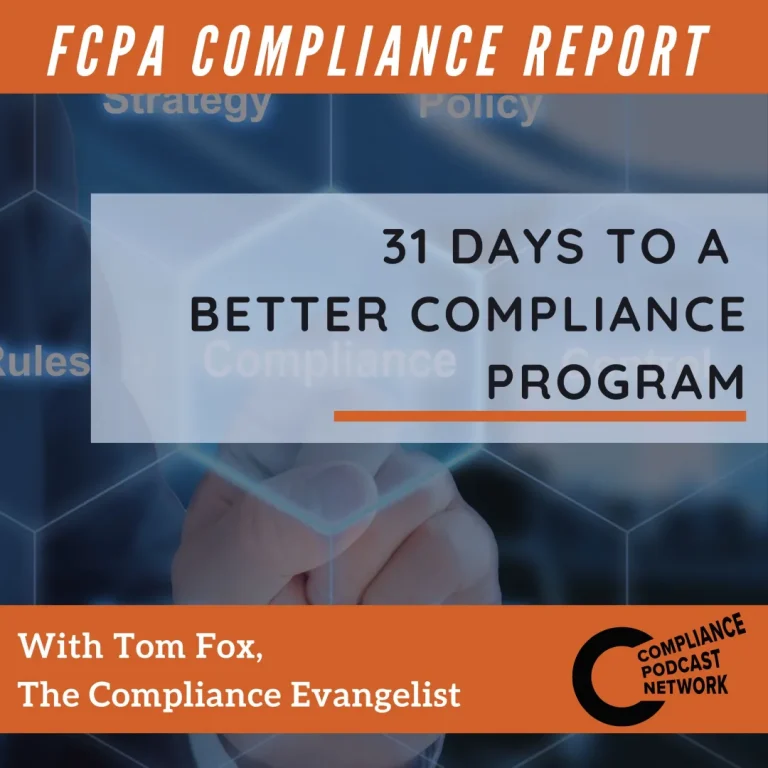In this podcast series, host Tom Fox explores the growing emphasis on clawback provisions in compliance programs and employee compensation.
Tom Fox delves into the crucial topic of clawback provisions in compliance programs and employee compensation. In light of the Department of Justice (DOJ) and Securities and Exchange Commission (SEC) prioritizing individual accountability for misconduct, clawbacks have become essential in promoting ethical behavior and ensuring compliance. So, let’s dive in and explore the significance of clawbacks in today’s evolving compliance landscape.
Understanding Clawbacks and Incentive-Based Compensation:
Clawbacks, as discussed in the podcast, are provisions that enable organizations to reclaim incentive or bonus funds from employees engaged in misconduct. They serve as a powerful deterrent and hold individuals accountable for their actions. Previously, clawbacks were not seen as necessary, but the DOJ now mandates their inclusion in compensation agreements.
The DOJ’s Focus on Ethical Business Practices:
The DOJ, in its pursuit of punishing officers and employees who fail to conduct business ethically, has made clawbacks a part of best practices compliance programs. To evaluate a company’s compliance program, the DOJ and SEC consider whether the organization has appropriate disciplinary procedures in place. Publicizing disciplinary actions internally and under local law can have a deterrent effect, emphasizing the importance of transparent consequences for misconduct.
The Role of Clawbacks in Compliance Programs:
Having clawback provisions is now seen as a crucial aspect of a good corporate compliance culture. It promotes compliant behavior and demonstrates a company’s commitment to its compliance program. The DOJ investigates whether corporations have included clawback provisions in their compensation agreements and taken steps to execute on such agreements. This highlights the significance of documenting and reflecting these policies and procedures in a company’s own compensation practices.
The SEC’s Final Rule on Clawbacks:
The SEC’s final rule, titled “Listing Standards for Recovery of Erroneously Awarded Compensation,” directs issuers to establish policies for recovering incentive-based compensation in the event of required accounting restatements. This rule applies to both Big R and Little R restatements and provides guidance in the anti-corruption world. Companies are now required to claw back incentive compensation erroneously received by current or former executives during the three-year period preceding the required restatement date.
Ensuring Compliance with Clawbacks:
It is essential for companies to construct well-documented clawback programs that align with the SEC’s guidance. The recoverable amount may differ from what executives would have received based on the required restatement, emphasizing the need for clarity and transparency in compensation agreements. Additionally, the SEC’s final rule prohibits companies from obtaining indemnity insurance to protect executives from clawbacks, further reinforcing the importance of accountability.
Conclusion:
As we’ve explored in this episode, clawbacks play a vital role in promoting ethical behavior and compliance within organizations. The DOJ’s emphasis on individual accountability and the SEC’s final rule on clawbacks demonstrate the evolving landscape of compliance. By implementing well-documented clawback provisions, companies can deter misconduct, hold individuals accountable, and showcase their commitment to ethical practices. Remember, incorporating clawbacks into your compliance program is not just a regulatory requirement but a practical step towards fostering a culture of integrity and responsibility.
Three key takeaways:
1. The DOJ now mandates clawbacks in a compliance program.
2. The SEC has passed a clawback rule apart from the Monaco Memo.
3. Your clawback program should be well-documented.
For more information, check out The Compliance Handbook, 4th edition, available on LexisNexis.com.



